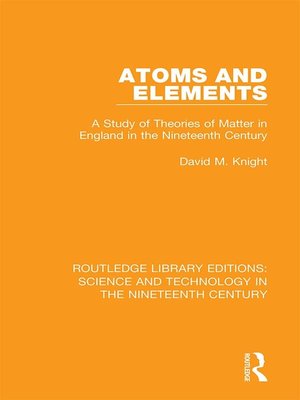Atoms and Elements
ebook ∣ A Study of Theories of Matter in England in the Nineteenth Century · Routledge Library Editions: Science and Technology in the Nineteenth Century
By David M. Knight

Sign up to save your library
With an OverDrive account, you can save your favorite libraries for at-a-glance information about availability. Find out more about OverDrive accounts.
Find this title in Libby, the library reading app by OverDrive.



Search for a digital library with this title
Title found at these libraries:
| Library Name | Distance |
|---|---|
| Loading... |
First published in 1967. The impression is sometimes given that the Atomic Theory was revived in the early years of the nineteenth century by John Dalton, and that continuously from then on it has played a vital role in chemistry. The aim of this study is to revise this over-simplified picture. Atomic explanations seemed to chemists to go beyond the facts, to fail to lend themselves to mathematical expression, and to deny the ultimate simplicity and unity of all matter. Most, therefore, rejected them.
Meanwhile, physicists were developing a whole range of atomic theories to explain the physical properties of bodies in terms of very simple atoms or particles.
During the last thirty years of the century the position changed, as physicists and chemists came to agree on a common atomic theory. But the last prominent opponents of atomism were not converted until the early years of the twentieth century, by which time studies of radioactivity had made it clear that the billiard-ball Daltonian atom must, in any case, be abandoned.







